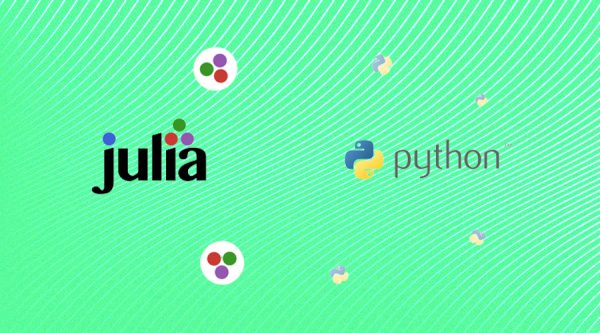Data scientists are preferring Julia over Python because of the extra benefits it brings to machine learning.
Julia is a multi-paradigm, primarily functional programming language that was created for machine-learning and statistical programming. Python is another multi-paradigm programming language that is used for machine learning, though generally Python is considered to be object-oriented. Julia, on the other hand, is more based on the functional paradigm. Though Julia certainly isn’t a more popular programming language as Python, there are some huge benefits to using Julia for Data Science that make it a better choice in a lot of situations than Python.
It’s hard to talk about Julia without talking about speed. Julia prides itself on being very fast. Julia, unlike Python which is interpreted, is a compiled language that is primarily written on its base. However, unlike other compiled languages like C, Julia is compiled at run-time, whereas traditional languages are compiled before execution. Julia, especially when written well, can be as fast and sometimes even faster than C. Julia uses the Just In Time (JIT) compiler and compiles incredibly fast, though it compiles more like an interpreted language than a traditional low-level compiled language like C, or Fortran.
Julia is a very uniquely typed language and has its quirks and features, but one of the coolest features is Julia’s multiple dispatches. First and foremost, Julia’s multiple dispatches are fast. On top of that, using Julia’s polymorphic dispatch allows for applying function definitions as properties of a struct. This, of course, makes inheritance viable inside Julia. Not only that but using Julia’s multiple dispatches makes a function extendable. This is a great benefit for package extensions, as whenever a method is explicitly imported, it can be changed by a user. It would be easy to explicitly import your method and extend it to route structures to a new function.
Unlike Python, Julia was made to be used in statistics and machine learning. Python was created in the early 90s as an easy object-oriented language, though it has changed a lot since then. Given Python’s history, and the wide variety of uses for Python since it’s so popular, using a language that was made specifically for high-level statistical work could show a lot of benefits.
Julia also wins over Python in linear algebra. Vanilla Python can chug through linear algebra, but vanilla Julia can fly through linear algebra. This is because of course Python was never meant to support all of the matrices and equations that go along with machine learning. By no means is Python bad, especially with NumPy, but in terms of a no-package experience, Julia feels a lot more catered towards these sorts of mathematics. Julia’s operand system is a lot closer to that of R than Python’s, and that’s a big benefit.
Source: analyticsinsight.net









